

St. Alexander Nevsky Cathedral

St. Alexander Nevsky Cathedral
The St. Alexander Nevsky Cathedral (Bulgarian: Храм-паметник „Свети Александър Невски“, Hram-pametnik „Sveti Aleksandar Nevski“) is a Bulgarian Orthodox cathedral in Sofia, the capital of Bulgaria. Built in Neo-Byzantine style, it serves as the cathedral church of the Patriarch of Bulgaria and is one of the largest Eastern Orthodox cathedrals in the world, as well as one of Sofia's symbols and primary tourist attractions. The St. Alexander Nevsky Cathedral in Sofia occupies an area of 3,170 square metres (34,100 sq ft) and can hold 10,000 people inside. It is the second biggest cathedral located on the Balkan Peninsula.

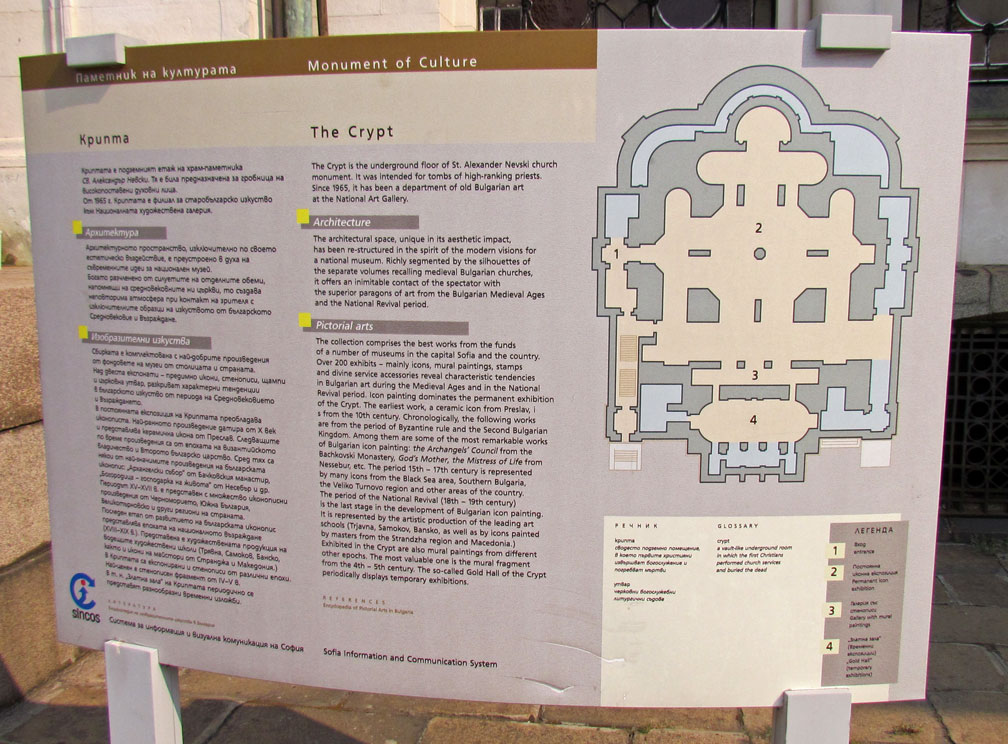
The Alexander Nevsky Cathedral is a cross-domed basilica featuring an emphasized
central dome. The cathedral's gold-plated dome is 45 m high (148 ft), with the
bell tower reaching 53 metres (174 ft). The temple has 12 bells with total
weight of 23 tons, the heaviest weighing 12 tons and the lightest 10 kilograms
(22 lb). The interior is decorated with Italian marble in various colors,
Brazilian onyx, alabaster, and other luxurious materials. The central dome has
the Lord's Prayer inscribed around it, with thin gold letters.
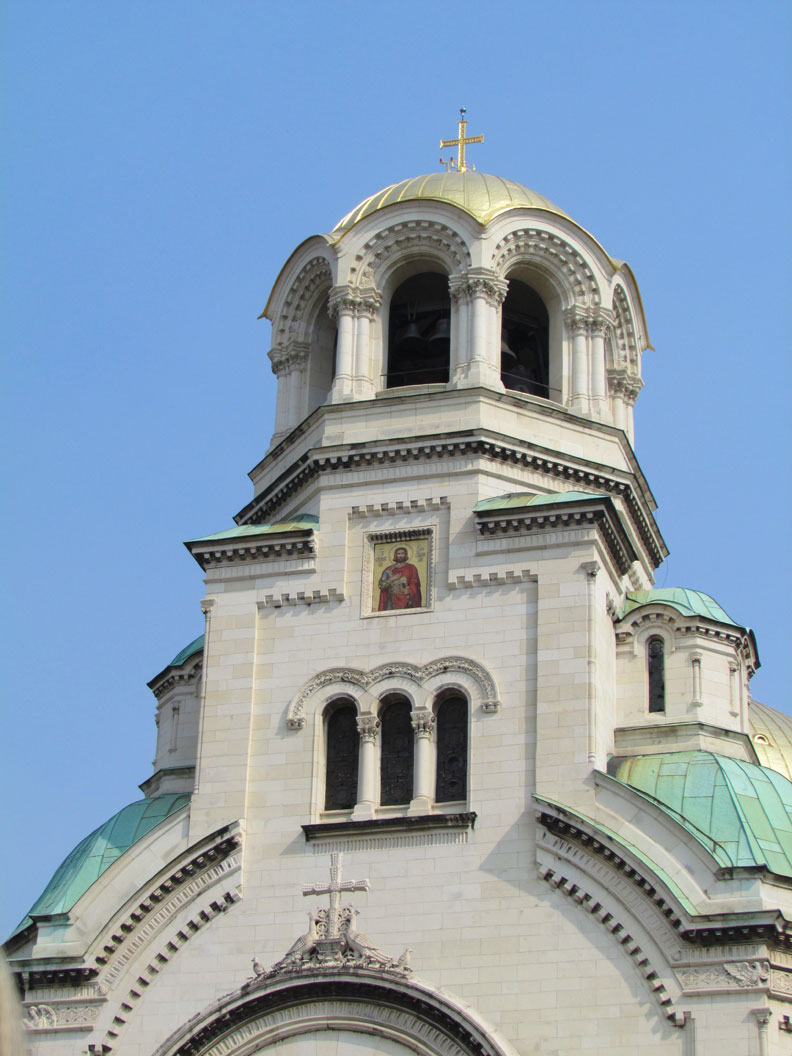
The construction of the St. Alexander Nevsky Cathedral started in 1882 (having
been planned since 19 February, 1879), when the foundation stone was laid, but
most of it was built between 1904 and 1912. Saint Alexander Nevsky was a Russian
prince. The cathedral was created in honor to the Russian soldiers who died
during the Russo-Turkish War of 1877-1878, as a result of which Bulgaria was
liberated from Ottoman rule.
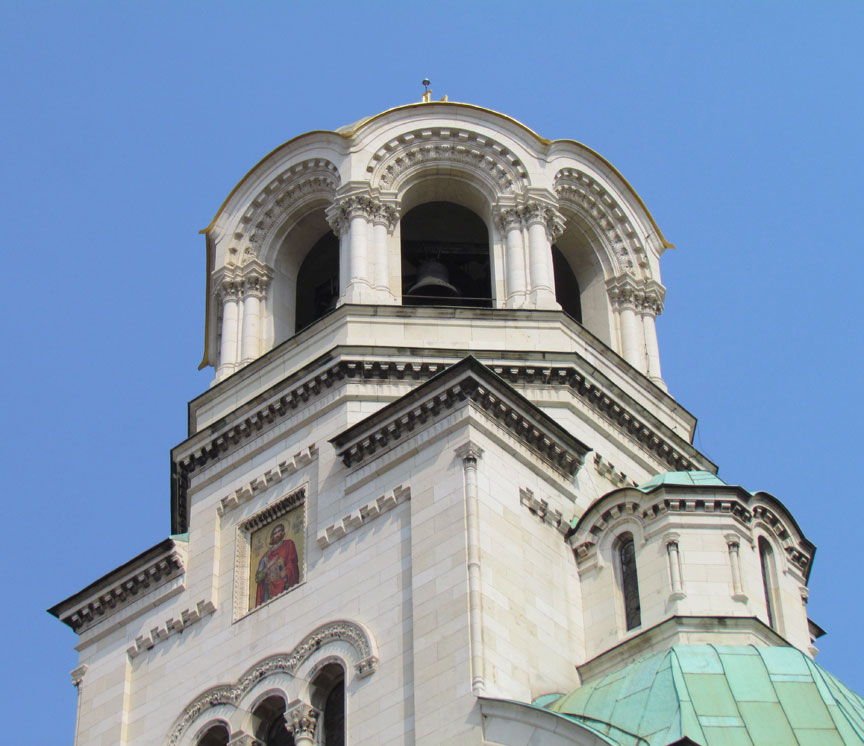
The cathedral was designed by Alexander Pomerantsev, aided by Alexander Smirnov
and Alexander Yakovlev, as the initial 1884-1885 project of Ivan Bogomolov was
radically changed by Pomerantsev. The final design was finished in 1898, and the
construction and decoration were done by a team of Bulgarian, Russian,
Austro-Hungarian and other European artists, architects and workers, including
the aforementioned architects, as well as Petko Momchilov, Yordan Milanov,
Haralampi Tachev, Ivan Mrkvička, Vasily D. Bolotnov, Nikolay A. Bruni, A.A.
Kiselyov, Anton Mitov and many others.
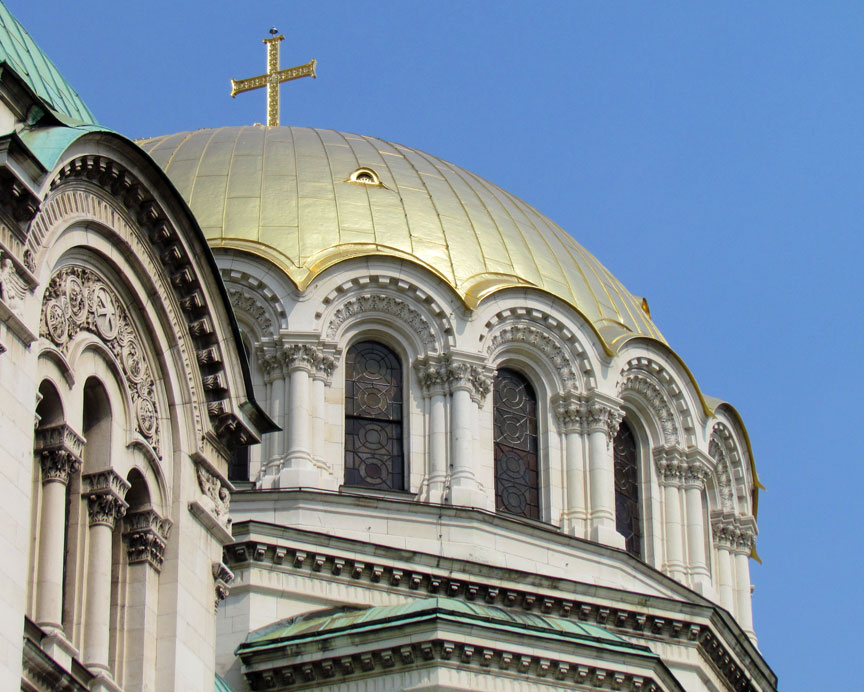
The marble parts and the lighting fixtures were created in Munich, the metal
elements for the gates in Berlin, while the gates themselves were manufactured
in Karl Bamberg's factory in Vienna, and the mosaics were shipped from Venice.
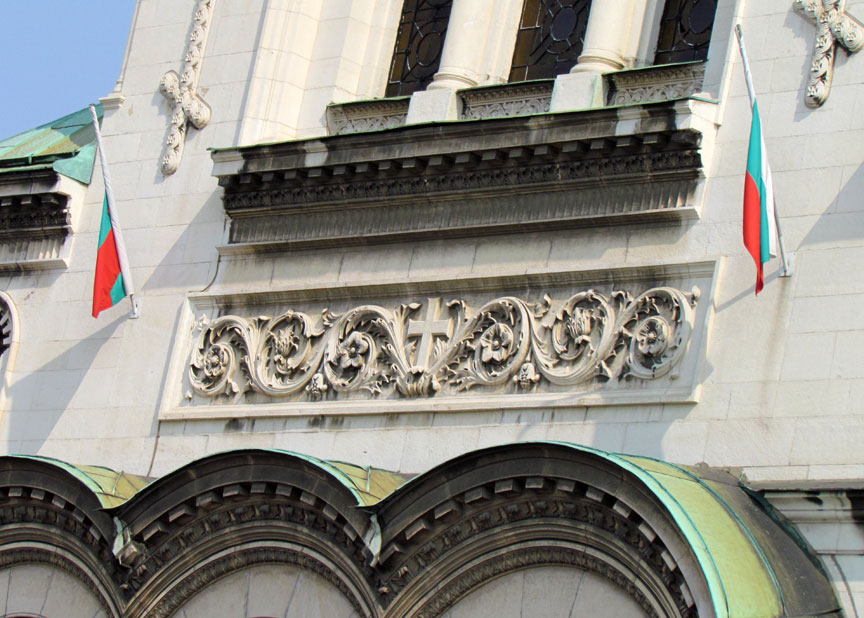
The name of the cathedral was briefly changed to the Sts. Cyril and Methodius
Cathedral between 1916 and 1920 (since Bulgaria and Russia belonged to opposing
alliances in WWI), but then the initial name was restored. The St. Alexander
Nevsky Cathedral was proclaimed a monument of culture on 12 September 1924.
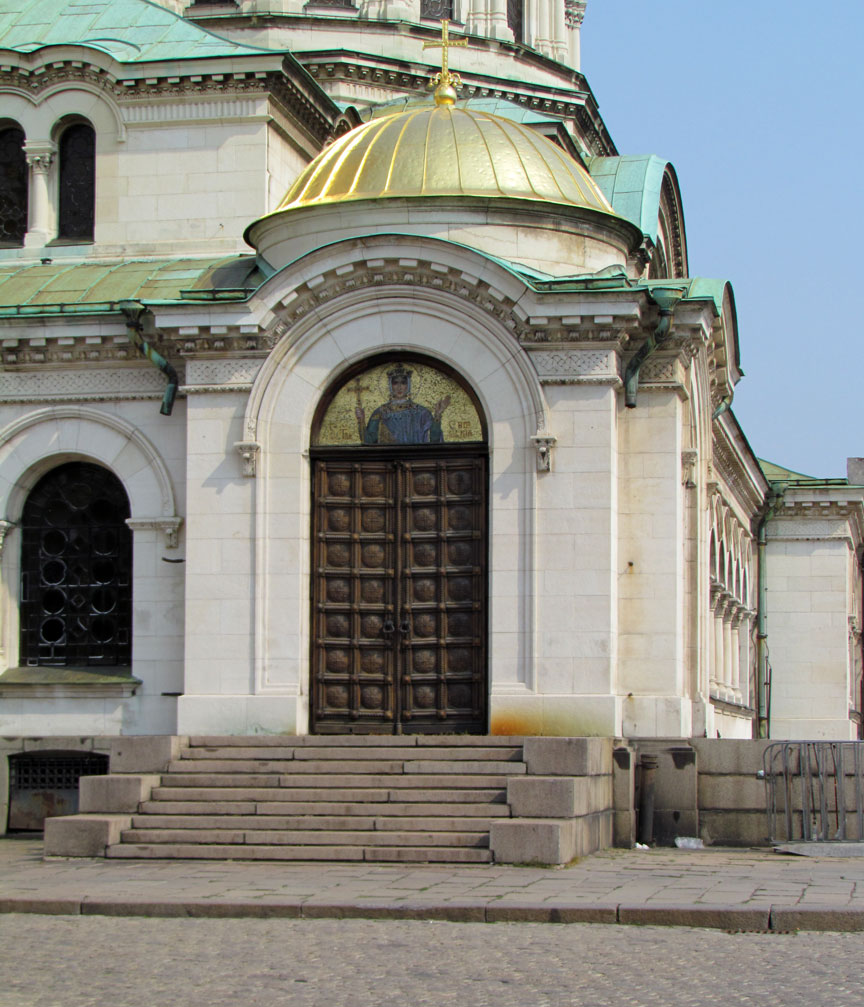
To the left of the altar is a case displaying relics of Alexander Nevsky, given
by the Russian Orthodox Church. Although the accompanying Bulgarian-language
plaque refers simply to "relics" (мощи), the item on display appears to be a
piece of a rib.
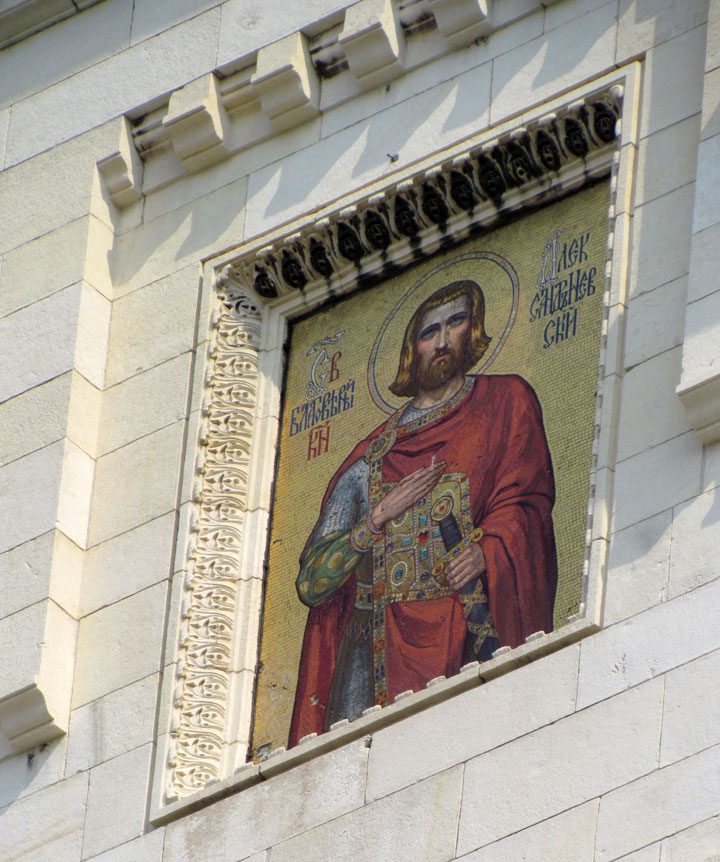
There is a museum of Bulgarian icons inside the cathedral crypt, part of the
National Art Gallery. The church claims that the museum contains the largest
collection of Orthodox icons in Europe.
Text from Wikipedia
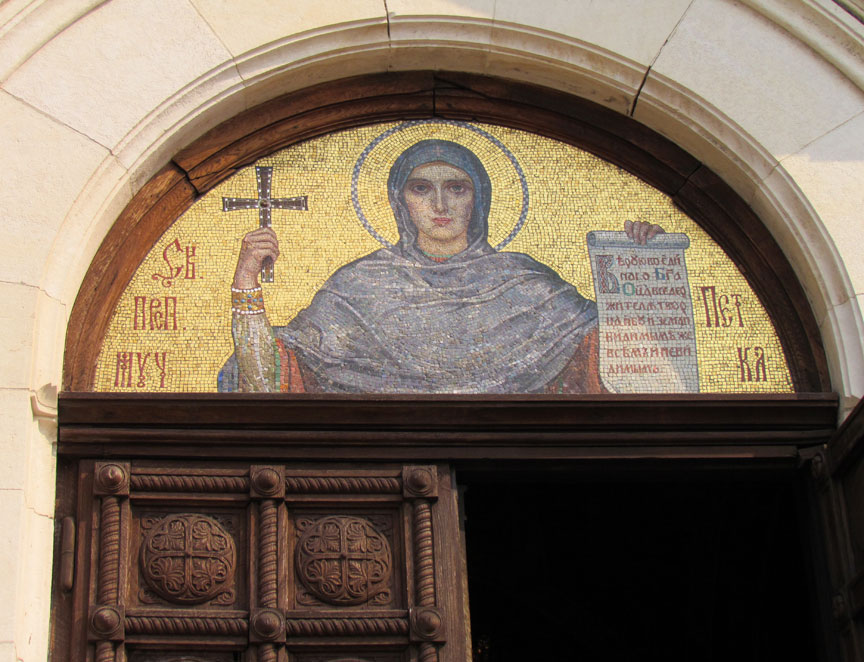
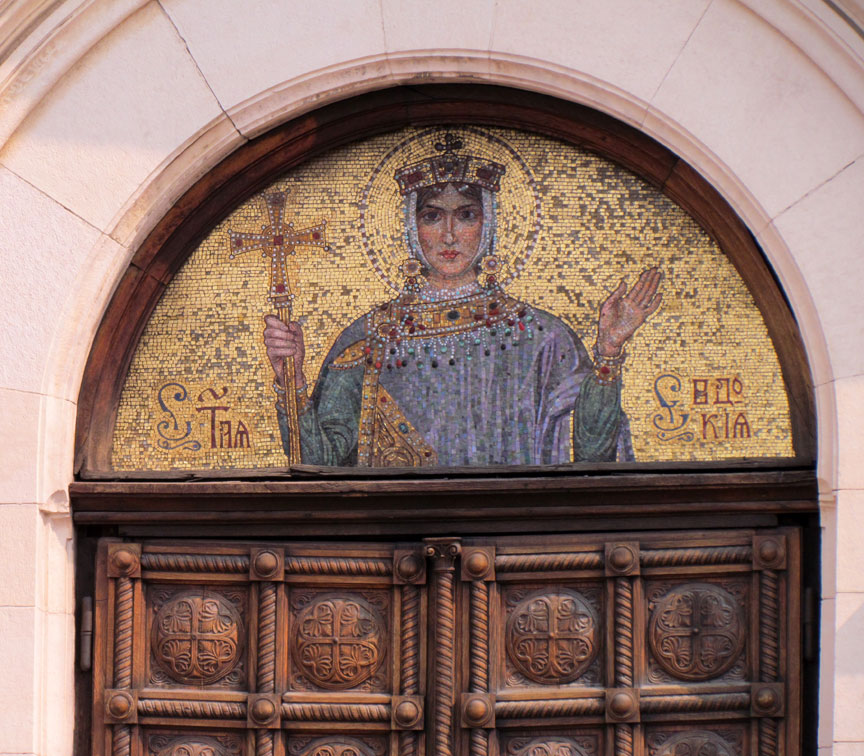
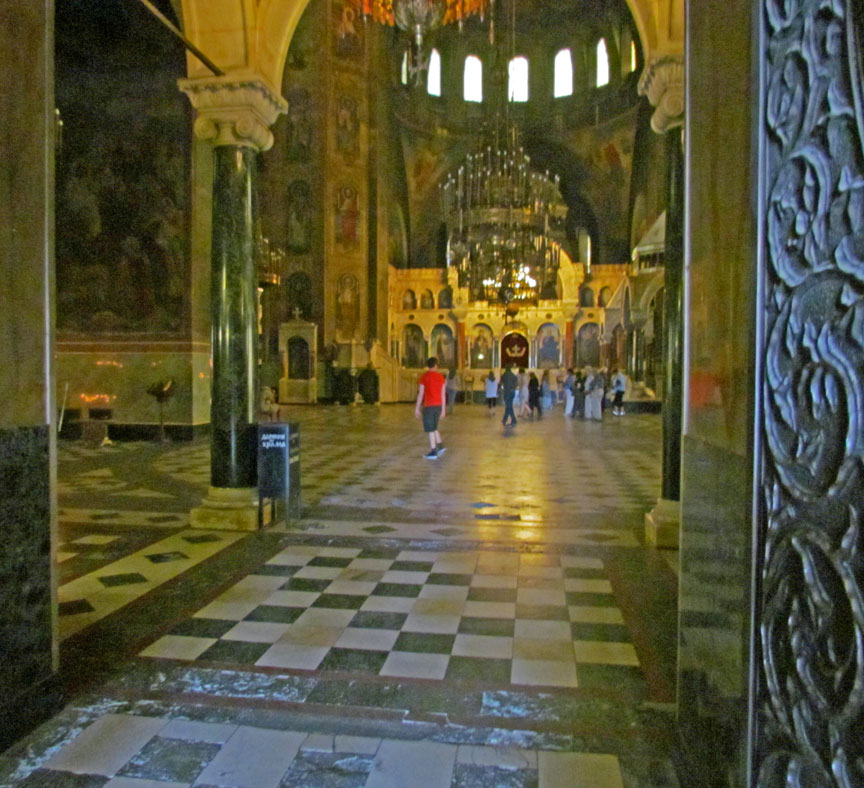
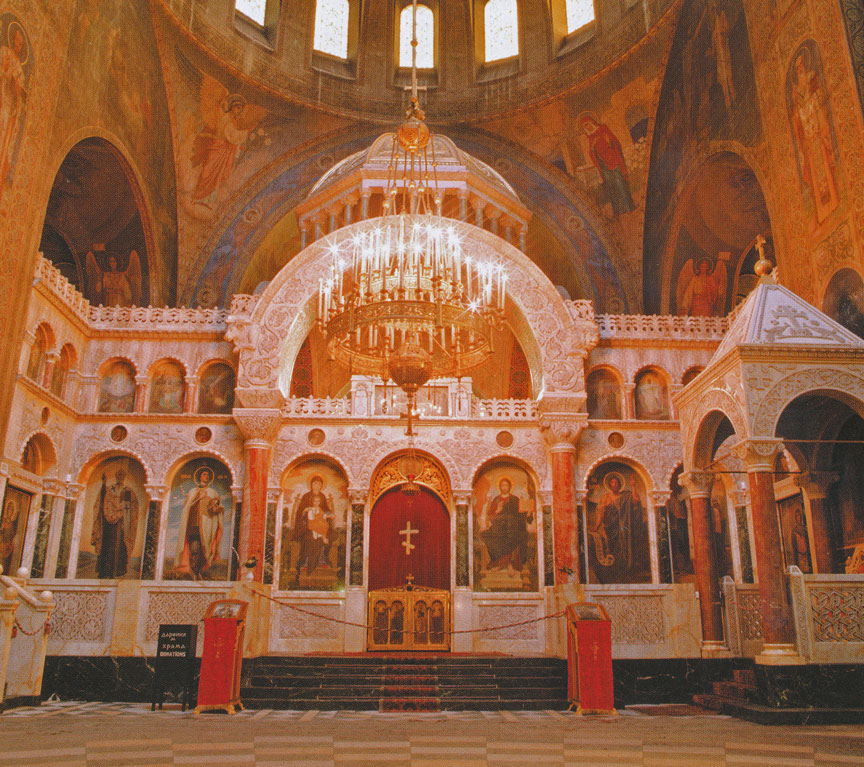
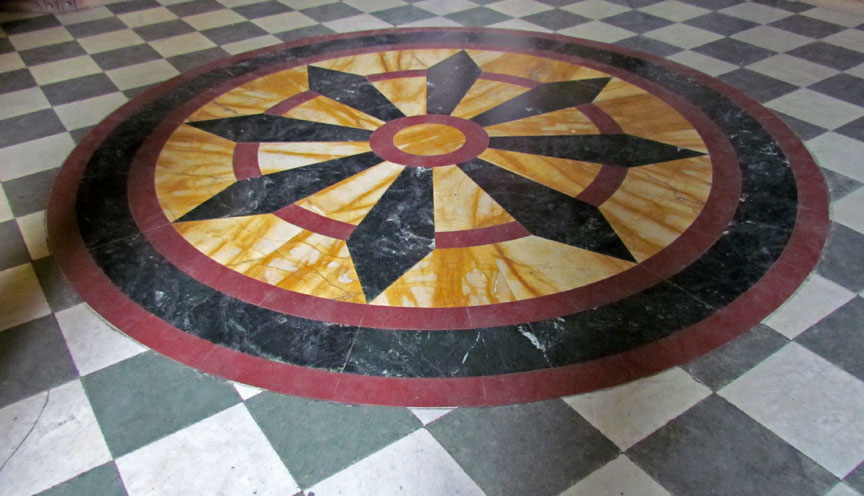

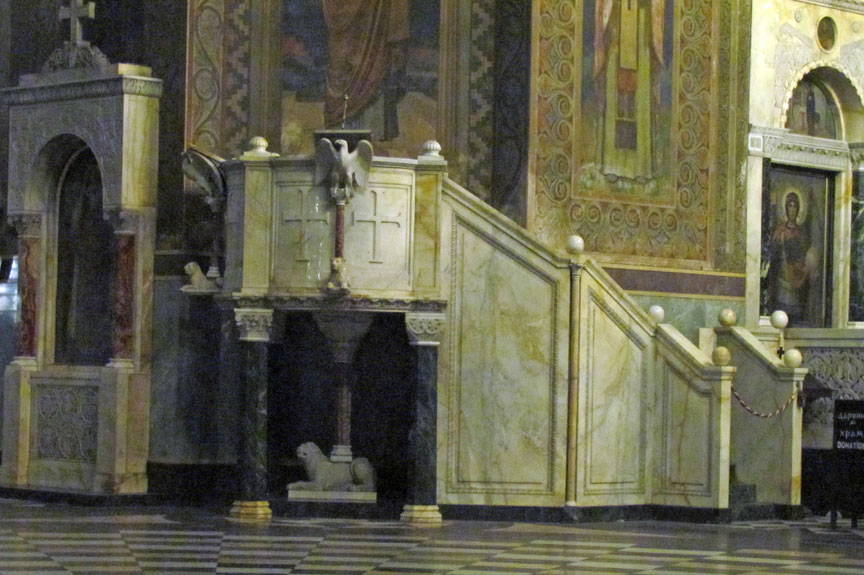
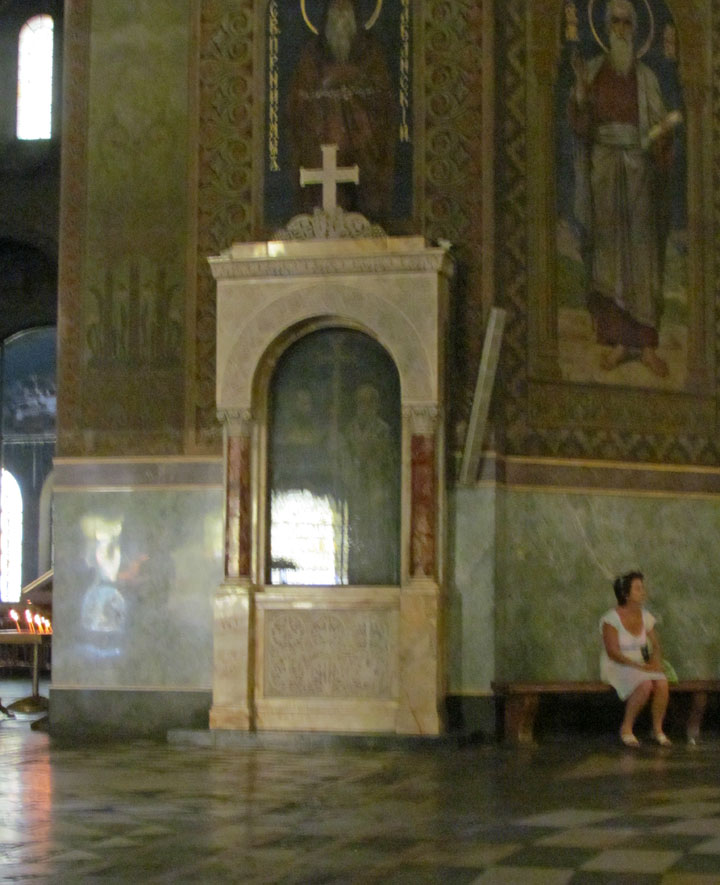
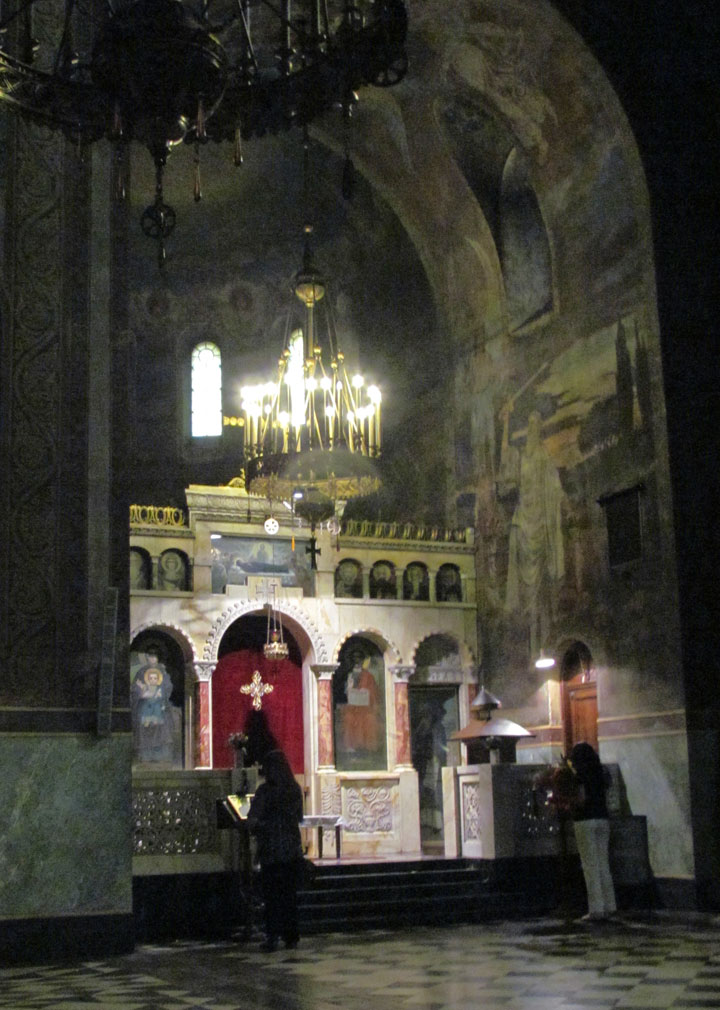
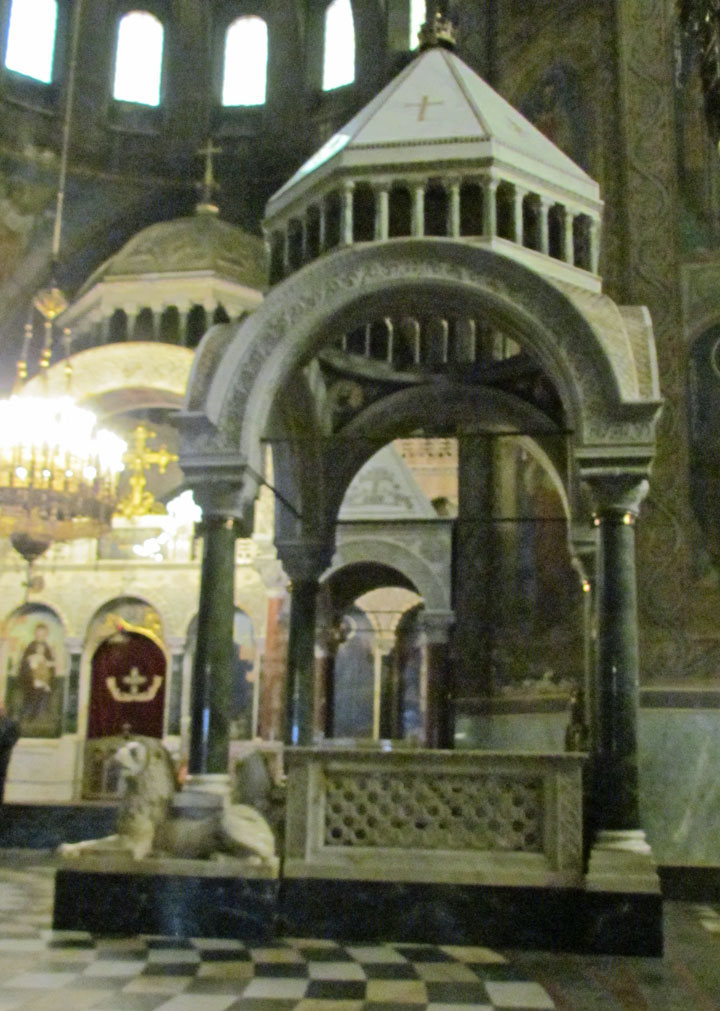
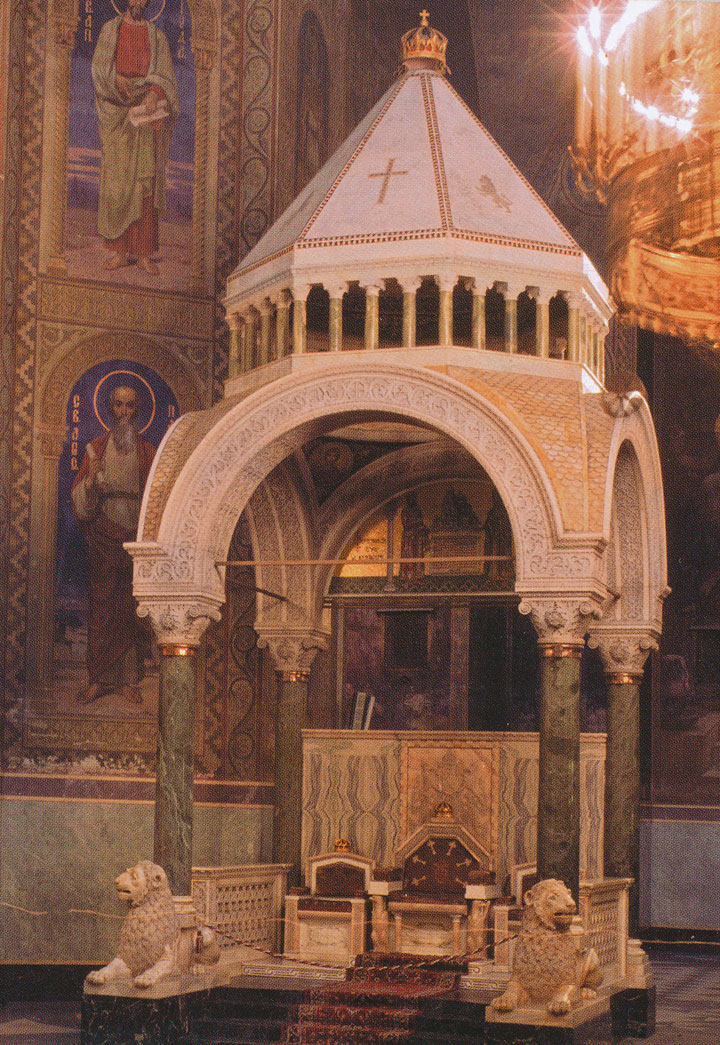
Tsar's throne
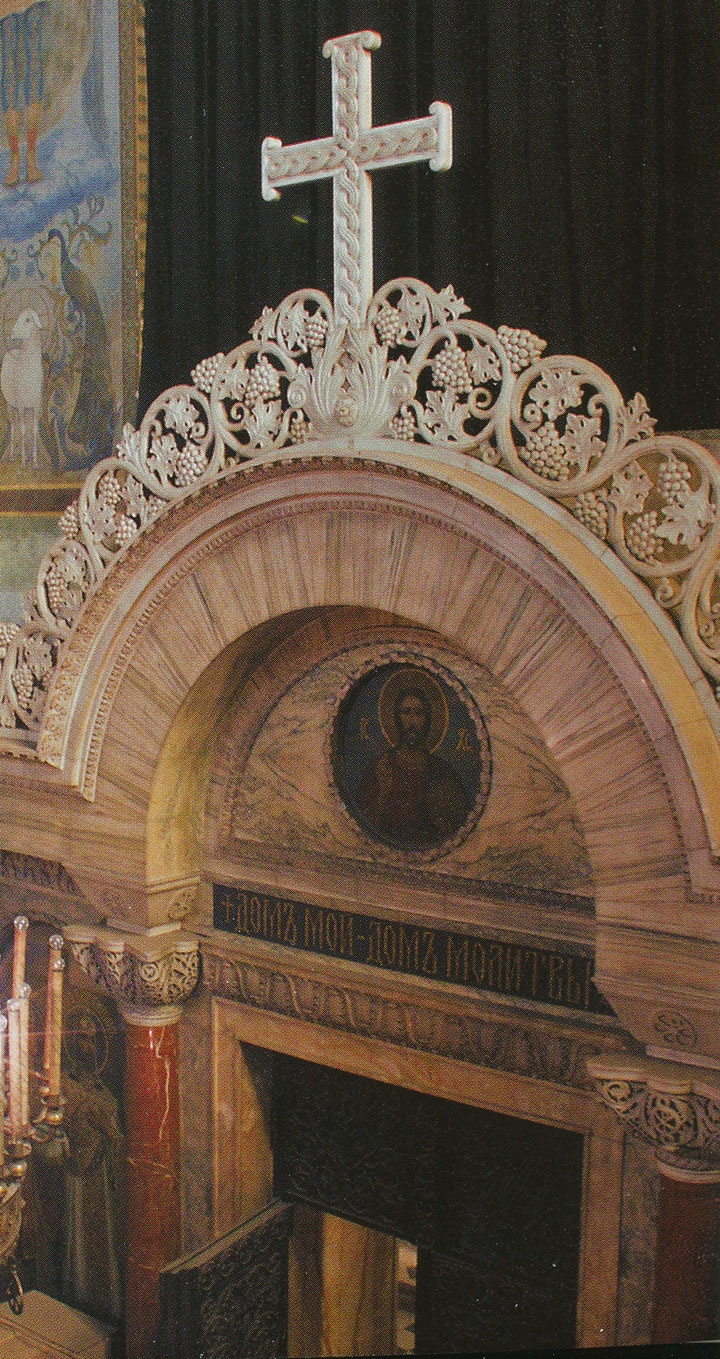
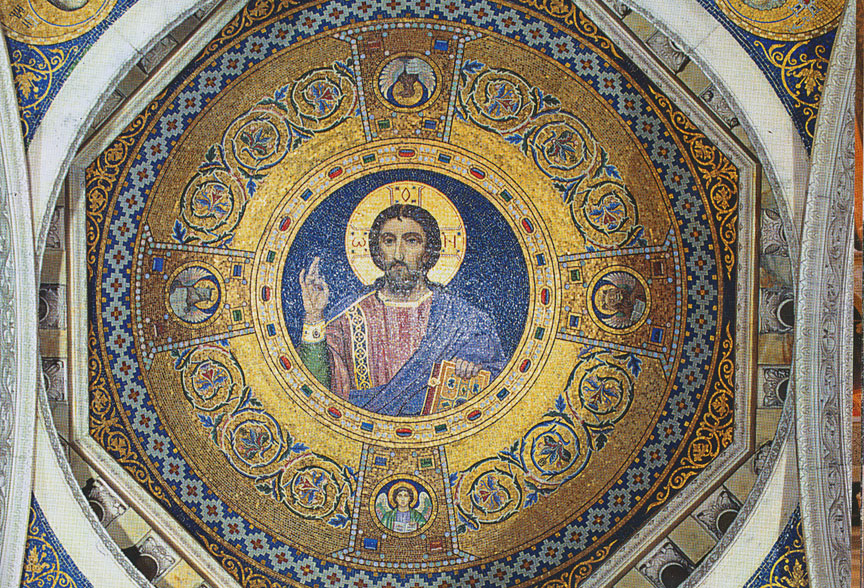
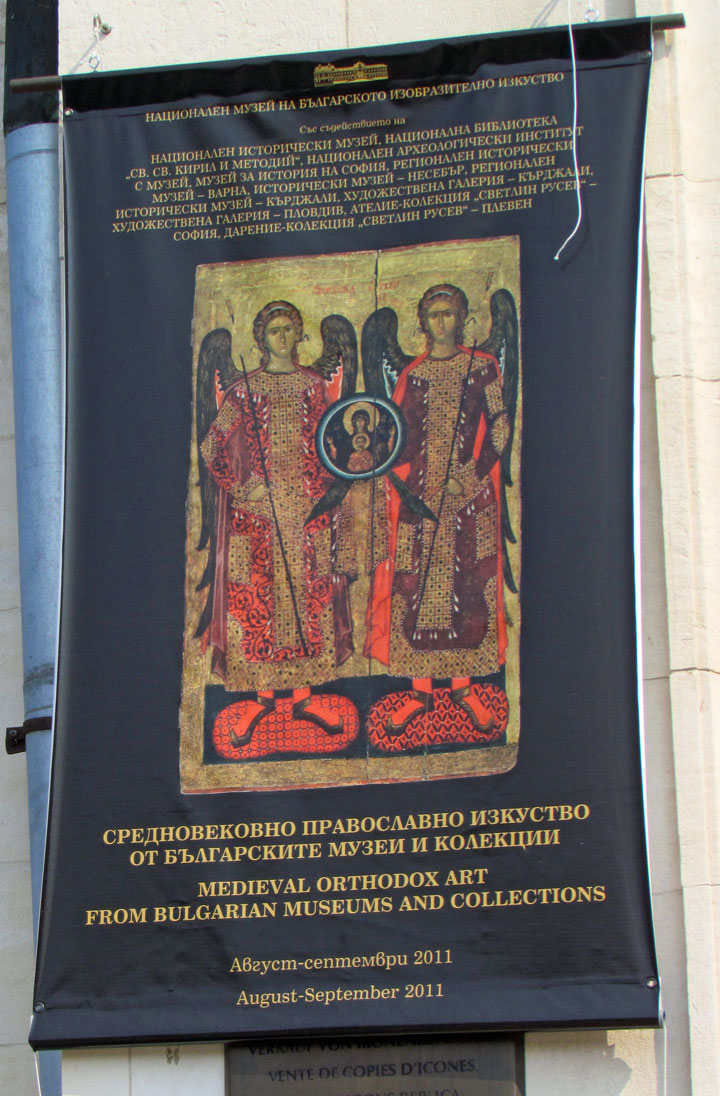
Medieval Orthodox Art exhibit